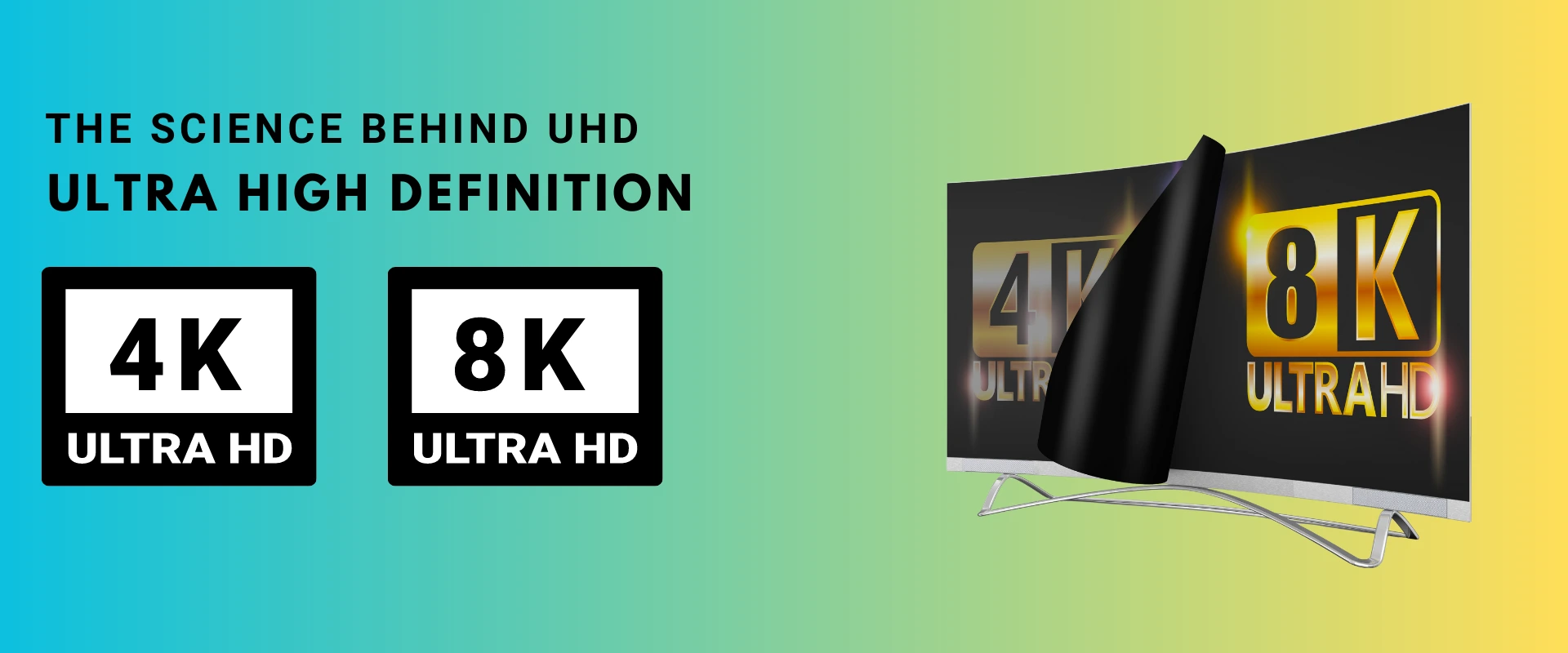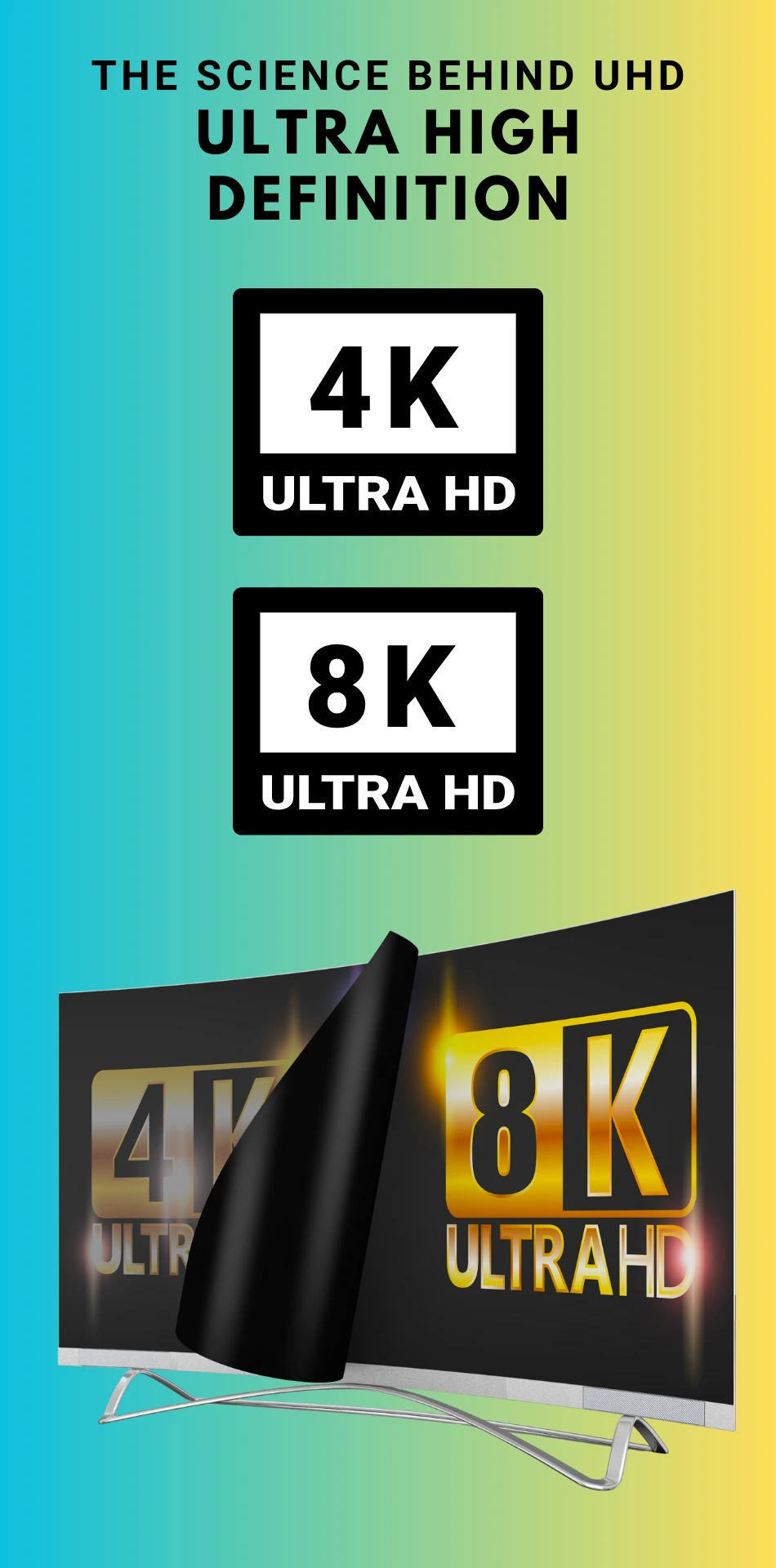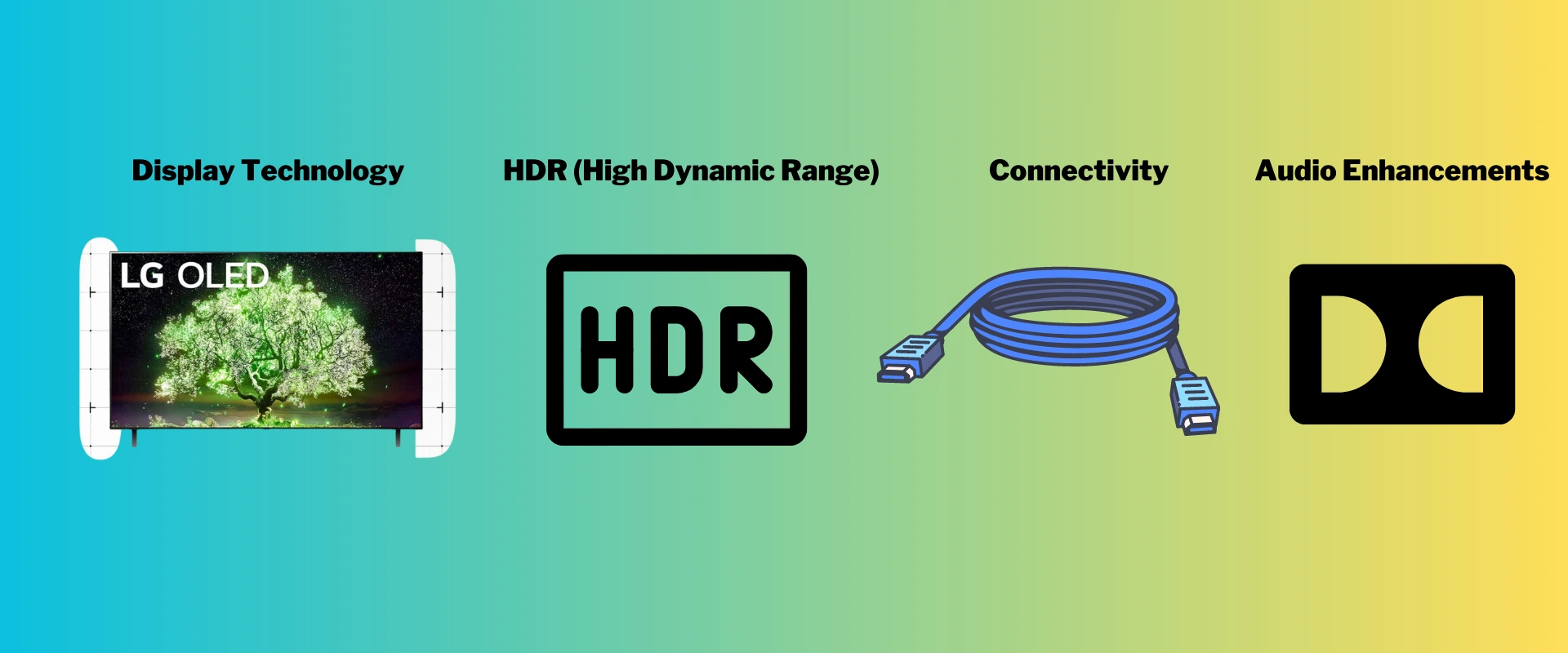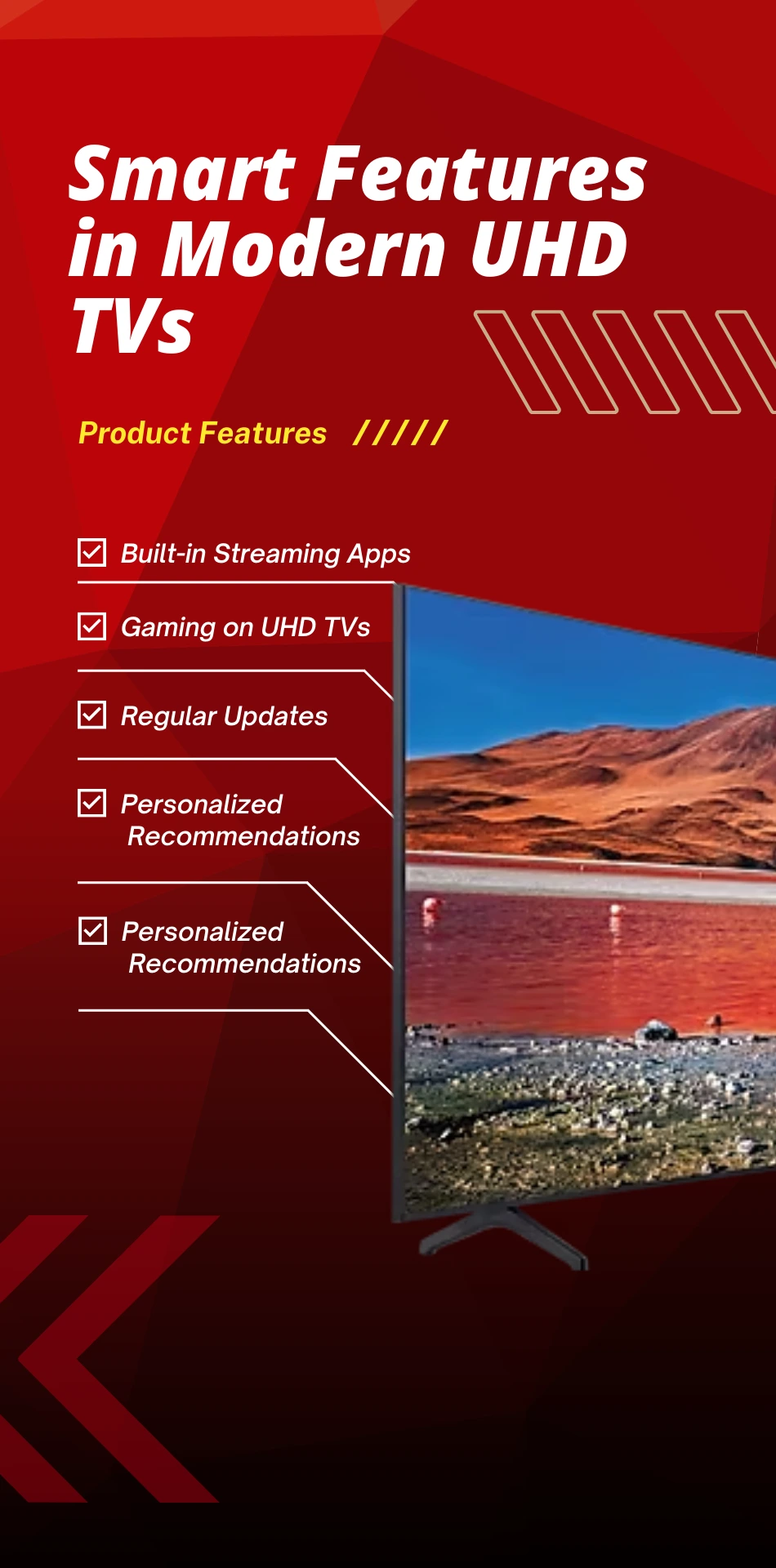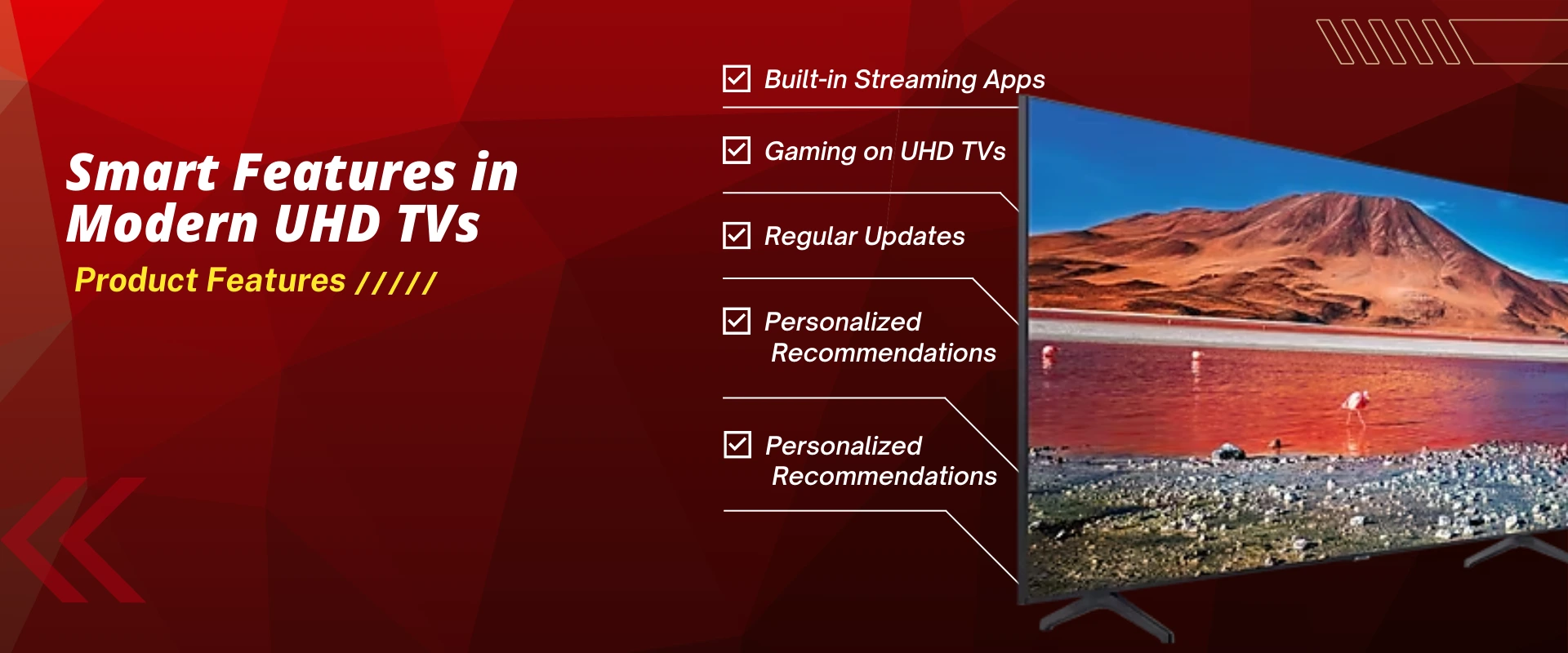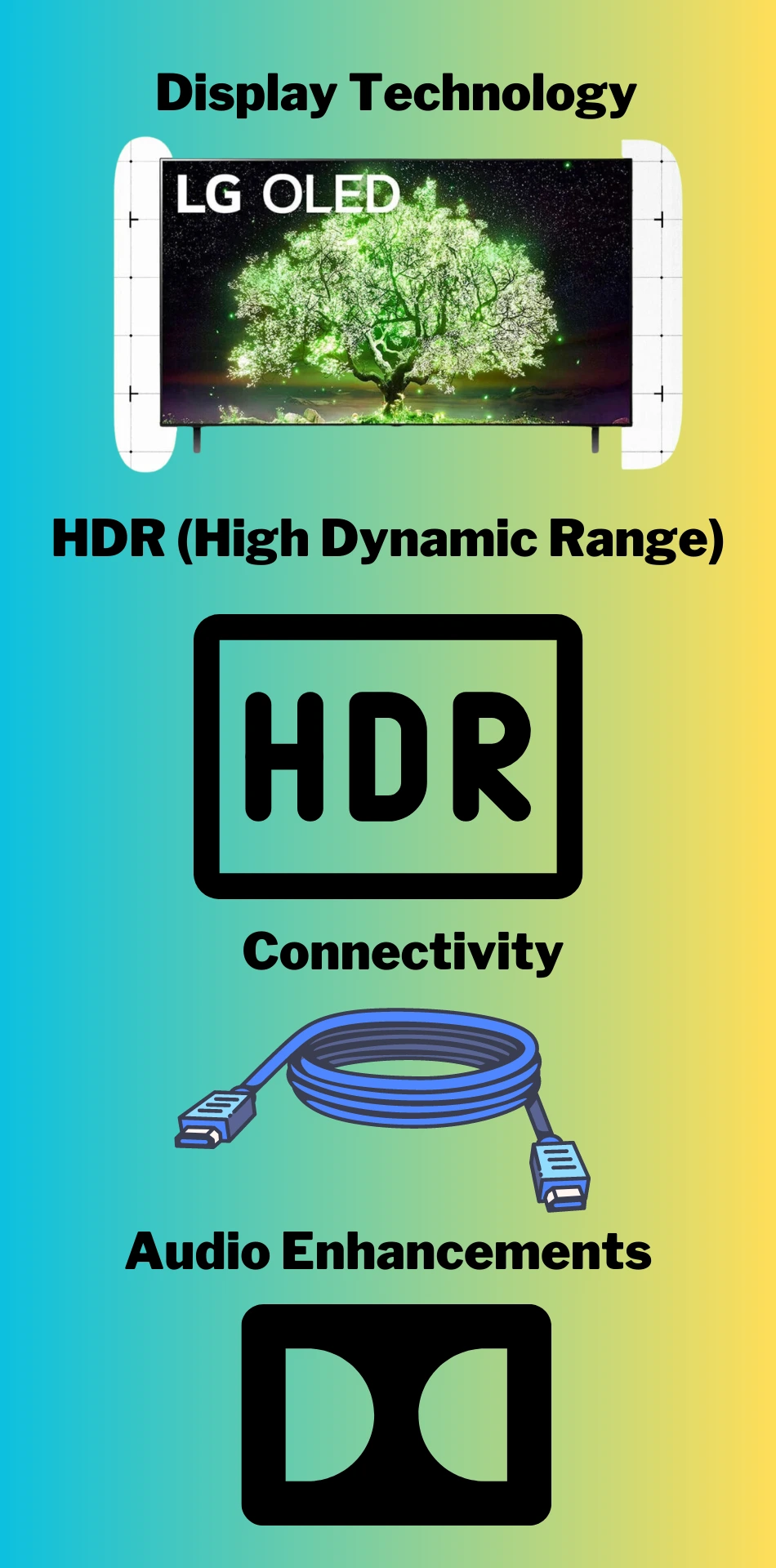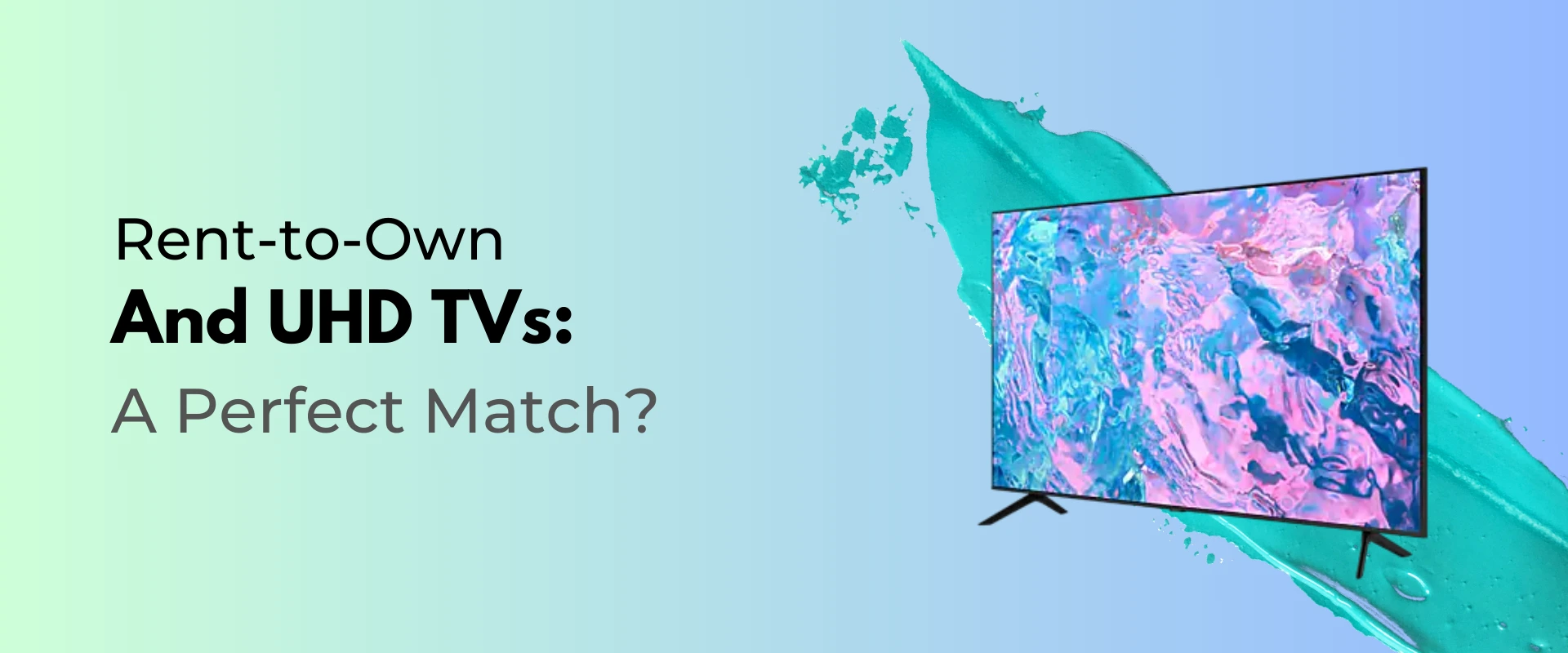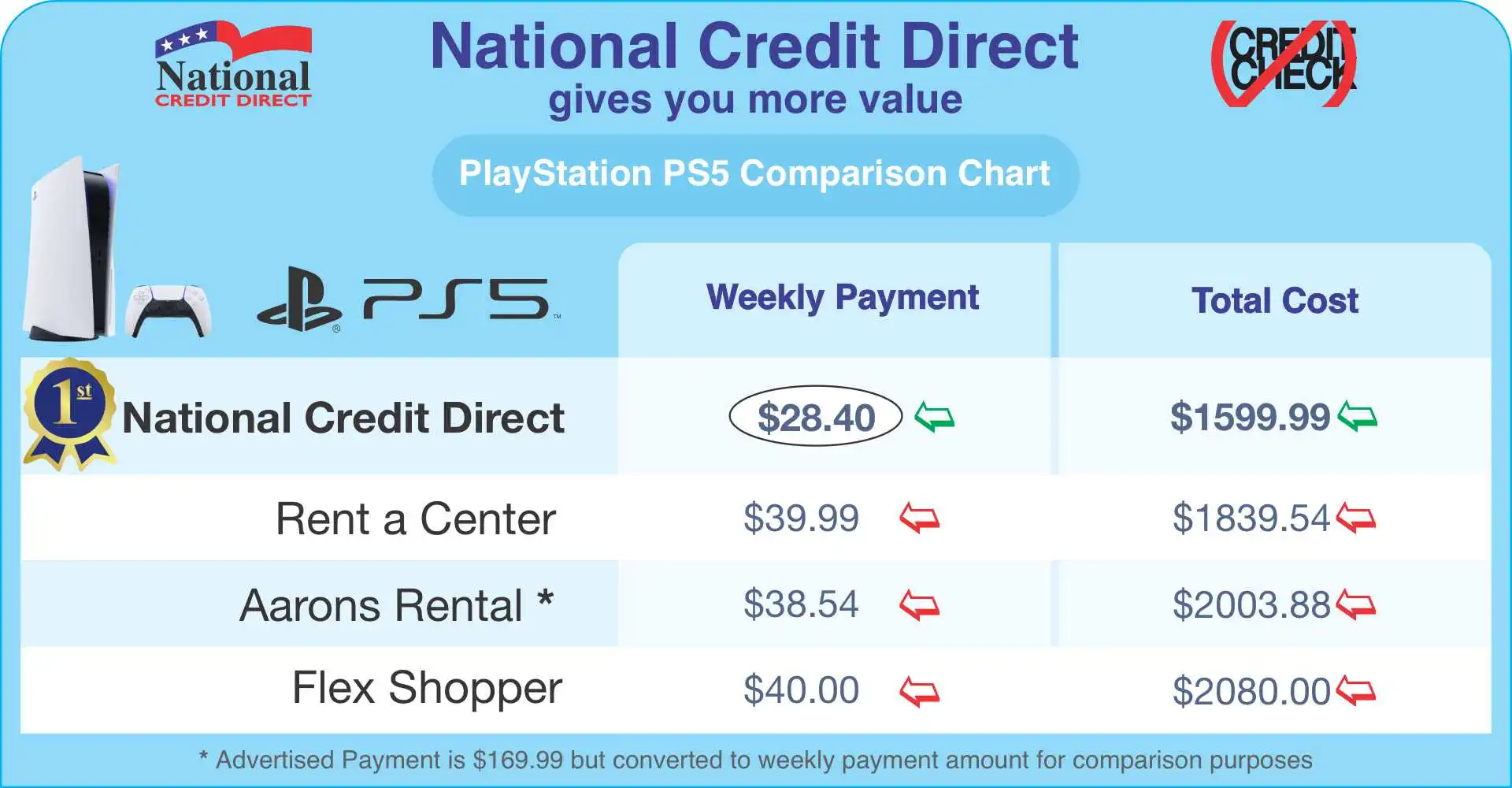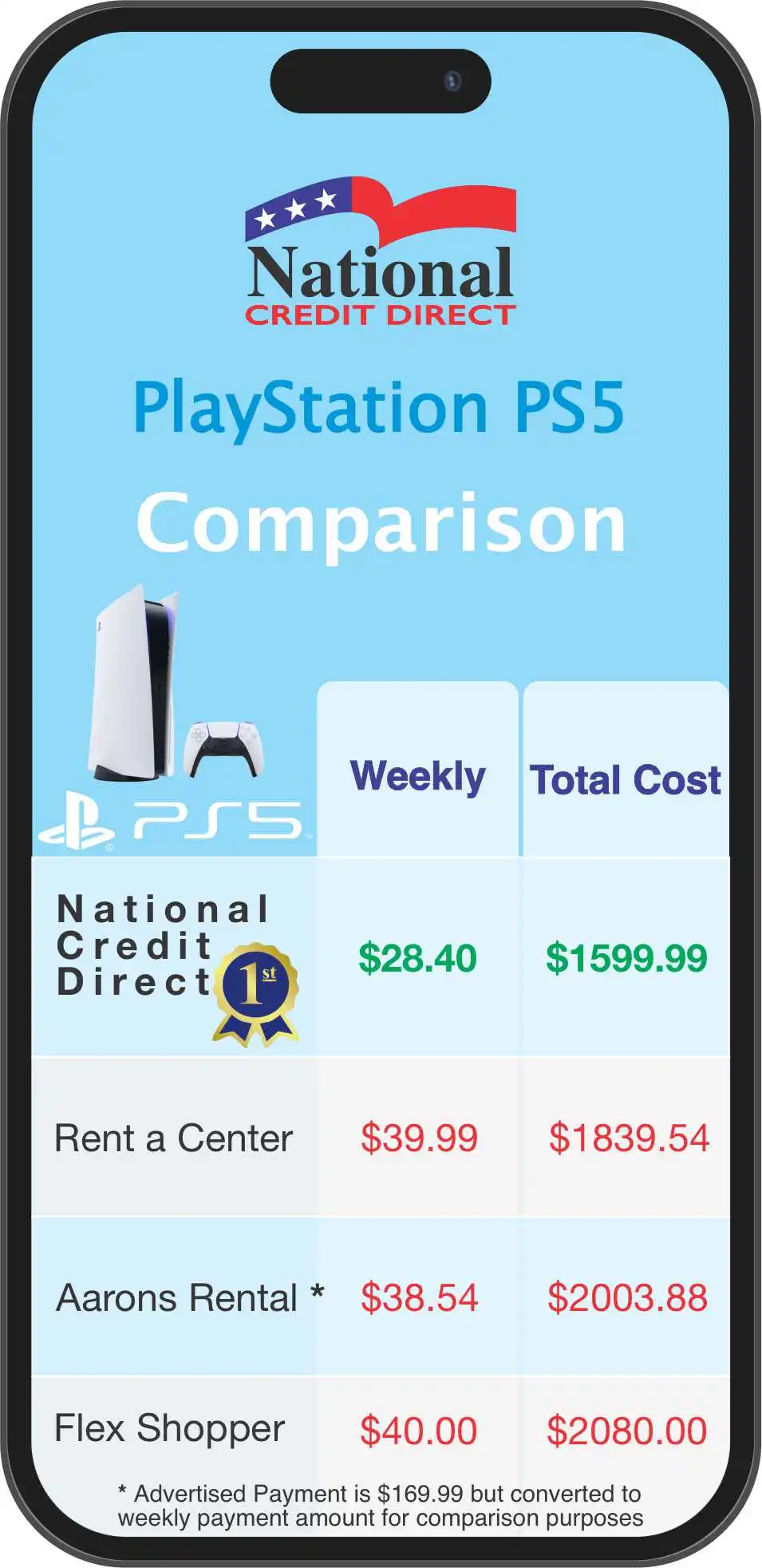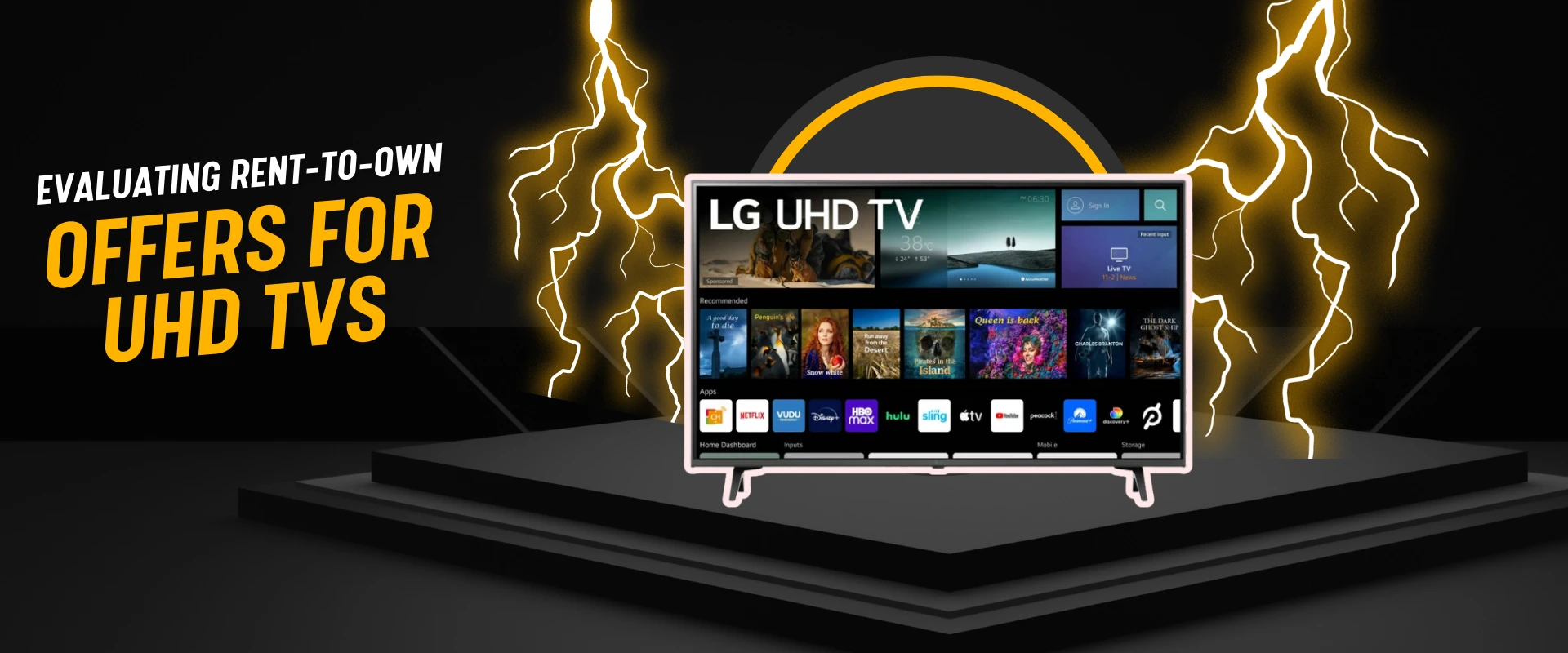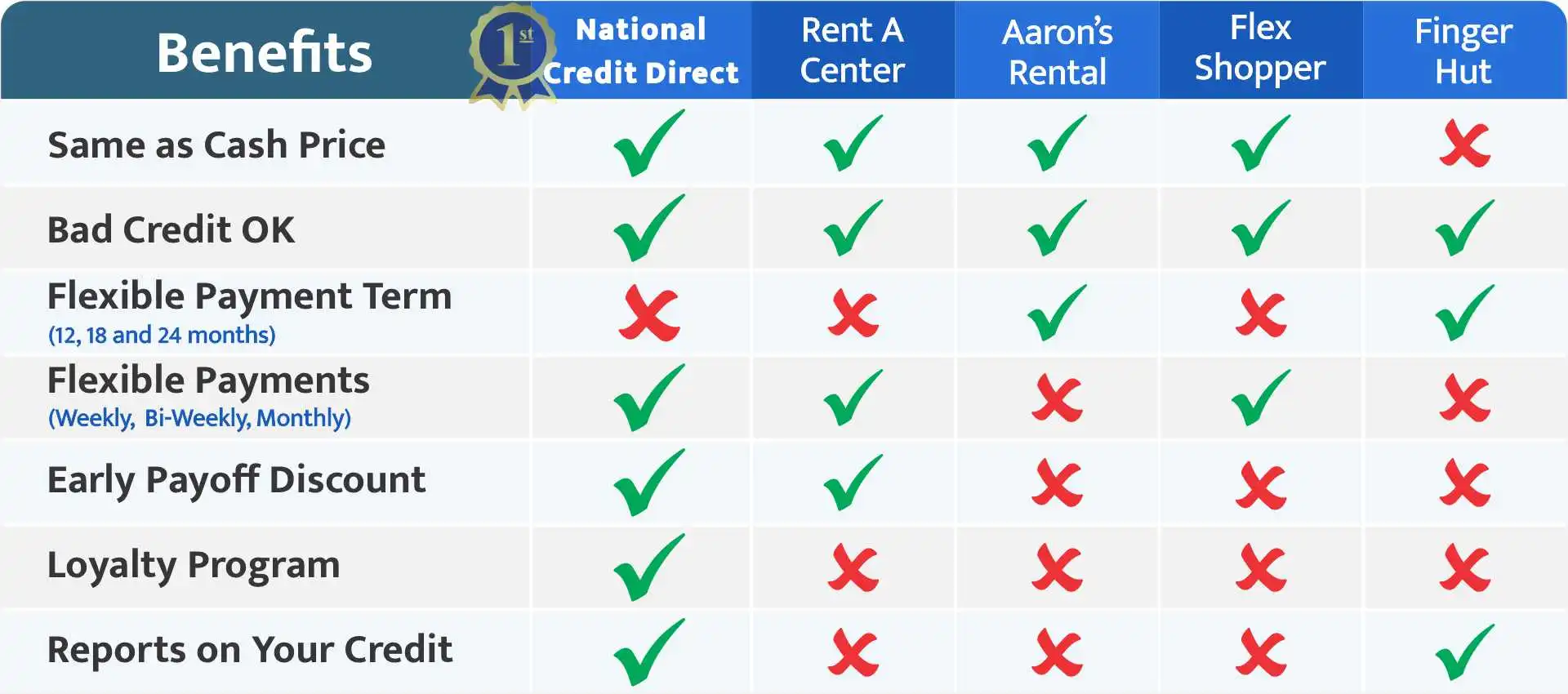Rent to Own Smart UHD TVs Topics
In today's digital age, the television isn't just an entertainment device; it's a centerpiece of home technology. With the rapid evolution of new TV technology, especially the rise of UHD, making an informed choice has never been more crucial. For those in Alexandria, Virginia, with financial constraints or credit challenges, the rent-to-own option offers a unique solution. It allows individuals to enjoy the latest in smart UHD TV technology without the hefty upfront costs. But why is understanding technical specifications so vital when considering rent-to-own? Let's dive in.
The Science Behind UHD (Ultra High Definition)
When we talk about UHD or Ultra High Definition, we're referring to a resolution that's four times that of Full HD. But what does this mean for the average viewer?
- Pixels and Resolution: At the heart of UHD is the pixel count. Imagine tiny dots that make up the TV screen. The more dots, the clearer and more detailed the picture quality. UHD TVs, especially 4K UHD, pack in around 8 million pixels, offering a high definition picture quality that's simply unparalleled.
- 4K vs. 8K: While 4K UHD is the buzzword, 8K is slowly making its entry. 4K offers 3840 x 2160 pixels, while 8K boasts a whopping 7680 x 4320 pixels. While 4K is perfect for most homes, 8K might be an overkill unless you have a massive TV screen or sit extremely close to it.
Understanding these technicalities ensures you're not just getting a TV, but an experience. When considering rent-to-own options, especially for those with limited financial flexibility, knowing these specs ensures you get the best bang for your buck.
Diving Deep into UHD TV Technical Specifications
When you're considering a rent-to-own UHD TV, especially with a tight budget or poor credit, it's essential to know what you're investing in. Let's break down the tech jargon:
- Display Technology:
- OLED: This stands for Organic Light Emitting Diodes. OLED TVs have individual pixels that produce their own light, resulting in deeper blacks and a higher contrast ratio.
- QLED: Quantum Dot LED TVs use quantum dots in conjunction with an LED backlight to produce brighter colors as compared to the other LED TVs.
- LED: These are the most common and are backlit by a series of LEDs (light-emitting diodes).
- HDR (High Dynamic Range): This isn't just about brightness. HDR enhances the difference between the darkest and brightest sections of your TV, providing a richer and more dynamic picture.
- Connectivity:
- HDMI 2.1: This is the latest version of HDMI that supports resolutions up to 10K and faster refresh rates, perfect for gaming.
- eARC: Enhanced Audio Return Channel allows for the transfer of high-quality audio from your TV to a soundbar or AV receiver.
- Wi-Fi 6: The latest Wi-Fi standard, ensuring faster internet connection speeds for streaming on your smart TV.
- Audio Enhancements:
- Dolby Atmos: This provides a more immersive audio experience, making it feel like sound is coming from all around you.
- DTS:X: Another form of immersive audio, ensuring you don't just watch, but feel the content.
By understanding these specifications, you ensure that you're not just renting a TV, but a comprehensive entertainment system. Especially for those with limited financial means, getting the most out of every dollar is crucial.
Smart Features in Modern UHD TVs
In today's digital age, a TV isn't just a box that displays shows and movies. It's an intelligent device that can connect, interact, and even anticipate your needs. Here's what the modern smart TV brings to the table:
- Built-in Streaming Apps: Gone are the days of cable TV being the primary source of entertainment. With built-in apps like Netflix, Amazon Prime Video, and YouTube TV, you have a world of content at your fingertips. Whether you're binge-watching a TV series or catching up on the news, these apps ensure you're always entertained.
- Voice Assistants and Smart Home Integration: "Hey Google, play my favorite playlist." With voice control, your TV becomes an active part of your smart home ecosystem. Integrate it with devices like smart speakers or even your mobile device, and control your entire home with just your voice.
- Gaming on UHD TVs: For the gamers out there, modern UHD TVs are a treat. Features like VRR (Variable Refresh Rate) and ALLM (Auto Low Latency Mode) ensure smooth gameplay without any lag. Whether you're playing multiplayer games on your game console or streaming them, the experience is seamless.
- Personalized Recommendations: Most smart TVs now learn from your viewing habits. They'll suggest shows, movies, or even YouTube videos based on what you've watched before. It's like having a personal entertainment assistant.
- Regular Updates: Just like your smartphone, smart TVs receive regular software updates. This means new features, better security, and improved performance over time.
For those with a tight budget or poor credit, a rent-to-own smart TV offers not just a screen but a gateway to a world of digital content and features. It's an investment in entertainment, information, and convenience.
Rent-to-Own and UHD TVs: A Perfect Match?
In today's rapidly advancing tech landscape, having the latest UHD TV can seem like a luxury reserved for the well-off. But with rent-to-own options, even those with low income or bad credit can experience the brilliance of modern television.
- Staying Updated with TV Tech: Every year, new UHD TV models with enhanced features make their debut. Rent-to-own allows individuals to enjoy these smart TVs without the daunting upfront cost. It's a gateway to the best tech offerings without breaking the bank.
- Budget-Friendly Financial Benefits: Rent-to-own provides a manageable financial plan for those watching their pennies. With flexible payment options, you can select a plan that aligns with your budget. Over time, those monthly payment plans culminate in owning a top-tier entertainment centerpiece.
- Credit Challenges? No Issue!: One of the standout advantages of rent-to-own is its accessibility to those with bad credit. Companies like National Credit Direct:, RAC, Aaron’s, and Flexshopper often look beyond credit scores, focusing on current payment capabilities.
- Seamless Upgrades: As smart TV tech advances, so do our desires. Rent-to-own offers the flexibility to upgrade. Once your lease agreement concludes, you can opt for a newer model, ensuring you're always equipped with the latest features.
- From Renting to Owning: It's not just about renting. At the end of your agreement, the UHD TV is yours. Every payment made is a step towards full ownership, turning your living room into a high-definition entertainment hub.
For those navigating financial challenges, rent-to-own UHD TVs offer a beacon of hope. It's a smart strategy, allowing you to indulge in the perks of cutting-edge technology while adhering to your financial boundaries.
Evaluating Rent-to-Own Offers for UHD TVs
When considering a rent-to-own UHD TV, it's essential to be discerning. Not all offers are created equal, and understanding the technical specs and the reputation of the rent-to-own company can make all the difference.
- Technical Specs Matter: Before diving into a lease agreement, ensure the UHD TV offers the latest features. Check for 4K UHD or even 8K, HDR (High Dynamic Range), and the type of display technology, be it OLED, QLED, or LED. Remember, picture quality is paramount, and a high-definition picture quality can transform your viewing experience.
- Beware of Outdated Tech: Some rent-to-own offers might promote older models as 'new'. Always cross-check the model number online to ensure you're getting a recent version. Outdated tech might lack features like HDMI ports, voice control, or compatibility with certain streaming services.
- Company Reputation: Companies like National Credit Direct, RAC, Aaron’s, and Flexshopper have made their mark in the rent-to-own industry. Research online reviews, check their offerings, and compare. A reputable company will offer transparent terms, flexible payment options, and quality products.
- Total Cost Analysis: While monthly payment plans can be enticing, it's essential to calculate the total cost over the lease term. Sometimes, the cumulative amount can exceed the TV's actual value. Always compare the total cost with the TV's market price.
- Brand Matters: When it comes to UHD TVs, brand reputation plays a significant role. Brands like Samsung, LG, and Sony are renowned for their picture quality, durability, and smart features. Opting for a recognized brand ensures longevity and a superior viewing experience.
In the quest for the ultimate viewing experience, being an informed consumer is crucial. By understanding the technical specs, evaluating the total cost, and choosing a reputable rent-to-own company, you can enjoy the brilliance of UHD TV without any regrets.
Conclusion
In the ever-evolving world of smart TVs, staying updated with the latest technology can seem daunting, especially when you're on a budget or have credit challenges. However, the rent-to-own model has emerged as a beacon of hope, allowing many to experience the magic of UHD TVs without the hefty upfront costs.
But, as with all things, knowledge is power. By understanding the technical specifications, from pixels to HDR and from HDMI ports to Wi-Fi 6, you arm yourself with the tools to make an informed decision. It's not just about the dazzling display or the immersive sound quality; it's about ensuring you're getting the best value for your money.
Remember, in bustling markets, many smart TVs offer similar features. But it's the minute details, the subtle differences in picture quality, the responsiveness of voice control, and the seamless integration of streaming apps that set the best apart from the rest.
Moreover, with online retailers and companies like National Credit Direct, RAC, Aaron’s, and Flexshopper in the fray, the rent-to-own landscape offers a plethora of choices. But, as always, the onus is on you, the consumer, to sift through these options, evaluate the total cost, and ensure you're not just getting a TV, but an experience.
In the end, whether you're a movie buff, a binge-watcher, or a gaming enthusiast, the right UHD TV can elevate your entertainment quotient. And with the rent-to-own model, this luxury is no longer confined to the elite. It's accessible, it's affordable, and most importantly, it's smart.
So, as you embark on this journey, remember to prioritize both tech specs and financial terms. After all, in the world of UHD TVs, it's not just about watching the big screen; it's about experiencing.
Frequently Asked Questions - FAQs.
- Q1. How do smart TVs connect to the internet?
- A1. The device can connect via Ethernet or WiFi via wire to a wired connection, smart phone or smartphone network. Many modern computers support 802.11ac Wi-Fi, but be careful of older models. Some models are expected to support a Wi-Fi 6 standard, but they are quite rare. How should I optimize my WiFi for video streaming?
- Q2. How does a smart TV compare to set-top boxes such as Roku, Apple TV, Google Chromecast or Amazon Fire TV?
- A2. You don't require the latest Smart TVs if you want to see Netflix movies on your computer. Best streaming devices may stream these services on older HD TVs or newer 4k TVs. These top model ranges include Google, Amazon & Roku. This streaming device however offers very little more functionality compared to a modern smart TV makes. Basically the devices manufacturers we have discussed have the same interfaces and apps available on each smart TV. The Streaming Stick + Roku has more than 15,000 channels and offers more than 3,000 apps.
- Q3. What are the benefits of UHD TV?
- A3. UHD, or Ultra High Definition, offers a viewing experience that's unparalleled in clarity and detail. One of the primary benefits is the enhanced picture quality, which is a result of a higher resolution. With UHD TV, you get four times the resolution of Full HD, ensuring sharper and crisper images. This is especially beneficial when watching content on big screens, where every pixel counts. Additionally, many UHD TVs come with advanced features like High Dynamic Range (HDR) which provides a broader spectrum of colors and improved contrast. Combine this with smart features, and you have a TV that not only offers superior visuals but also connects seamlessly with streaming services, mobile devices, and even voice control assistants.
- Q4. What does UHD mean for smart TVs?
- A4. UHD stands for Ultra High Definition, representing a resolution of 3840 pixels × 2160 lines (8.3 megapixels, aspect ratio 16:9) and is one of the two resolutions of ultra high definition television targeted towards consumer television, the other being 8K UHD. For smart TVs, UHD means not only a clearer, more detailed picture but also a more immersive viewing experience. When combined with the connectivity and interactive features of smart TVs, UHD enhances streaming apps, gaming, and even regular TV shows, making content come alive on screen. It's like bringing the cinema right into your living room, but with the added benefits of internet connectivity and smart features.
- Q5. What features should I look for when buying a smart TV?
- A5. When considering a smart TV purchase, look beyond just the screen size. Prioritize high definition picture quality, with UHD or 4K UHD being the gold standard. Check for HDR support, which offers better contrast and a wider range of colors. Connectivity is key, so ensure it has multiple HDMI ports, Wi-Fi Direct, and compatibility with streaming devices. Voice control, compatibility with smart home devices, and built-in streaming apps offer added convenience. If you're a gamer, features like Auto Game Mode, low input lag, and support for next-gen game consoles can be crucial. Lastly, consider the TV's operating system, ensuring it's user-friendly and supports a wide range of app stores and streaming services.
- Q6. What is the difference between smart and UHD?
- A6. While both terms are often used interchangeably, they refer to different aspects of a TV. UHD, or Ultra High Definition, pertains to the resolution and picture quality of the TV. It offers a more detailed and sharper image compared to regular HD. On the other hand, 'smart' in smart TVs refers to their ability to connect to the internet, access streaming services directly, and often come with built-in apps and features like voice control or compatibility with other smart devices. In essence, a UHD TV focuses on delivering superior visuals, while a smart TV emphasizes connectivity and interactivity. However, most modern UHD TVs are also smart TVs, combining the best of both worlds.


